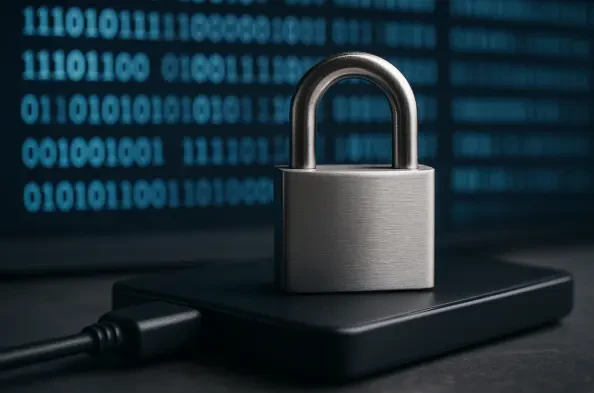In the face of increasingly sophisticated cyber threats, enterprises are compelled to re-evaluate and evolve their cybersecurity strategies to protect sensitive data and operational integrity. Proactive security and exposure management have become pivotal components in building a robust defense mechanism, offering a strategic shift from merely reacting to threats towards mitigating them before they materialize. This approach focuses on identifying and managing exposure points within an organization’s framework, thereby preventing potential breaches by addressing vulnerabilities early on. The key lies in understanding that the advancement of methods purely centered on detection and response is no longer adequate to counter the complexities of modern cyberattacks. Organizations must engage in comprehensive risk exposure management to stay one step ahead of adversaries, supported by statistical analyses derived from real-world data illuminating the benefits of proactive approaches over purely responsive measures.
Importance of Exposure Management
Traditional cybersecurity models predominantly rely on detecting threats once they infiltrate the system, leaving organizations vulnerable and frequently on the defensive. This reactive strategy has shown significant limitations as attackers develop increasingly sophisticated techniques. As a result, exposure management has emerged as a crucial aspect of proactive security strategies, shifting the focus to preemptively identifying potential points of vulnerability. Key tools and indices, such as the Exposure Index, are integral to managing exposure and risk. The Exposure Index scores the potential threat exposure of an organization from 0 to 100; higher scores denote greater vulnerability to cyber threats. The inclusion of the Exposure Index in comprehensive risk assessments allows organizations to quantify their cybersecurity posture, enabling informed decision-making and prioritization of remediation efforts targeting high-risk areas. This systematic approach marks a significant progression in cybersecurity strategy, as it facilitates structural fortification against threats, ultimately reducing the likelihood of successful cyberattacks.
Role of Detection-Response Capabilities
Detection-response capabilities like Security Operations Centers (SOCs) and Managed Detection and Response (MDR) services play essential roles alongside proactive exposure management. SOCs serve as the nerve center for an organization’s cybersecurity infrastructure, offering continuous monitoring, threat detection, and response capabilities within the internal environment. These operations centers are crucial for real-time threat tracking and mitigation endeavors, enabling rapid responses to potential breaches. However, not all organizations have the resources to manage these centers internally, leading to increased reliance on external MDR services. MDR provides indispensable threat monitoring and incident response capabilities, catering to enterprises lacking in-house resources. While MDR services alone have not shown statistical significance in independently reducing damage probability, they contribute effectively when paired with managed exposure metrics, demonstrating the need for both proactive and reactive strategies working in harmony. Consequently, MDR services, complemented by exposure management, offer comprehensive coverage, ensuring robust defense mechanisms against evolving threats.
Statistical Validation of Proactive Strategies
The enhanced cybersecurity posture derived from proactive exposure management strategies is underlined by empirical data, meticulously analyzed using statistical tools such as Fisher’s Exact Test and Risk Ratios. These tests and ratios are instrumental in validating the effectiveness of proactive security measures, comparing damage incidents among organizations with varying exposure scores and MDR usage. Statistical indicators point to notable trends; organizations with lower exposure scores typically experience reduced damage rates, while MDR services further lower incident rates when exposure is concurrently managed. Despite MDR services not independently showcasing statistical prowess in reducing damage likelihood, their effectiveness becomes pronounced when integrated with exposure management strategies. This maximum secure configuration emerges as a powerful paradigm, optimizing resource allocation and cybersecurity infrastructure. By utilizing statistical analysis, enterprises gain deeper insights into potential threat patterns and the efficacy of defense mechanisms, ensuring more informed strategic planning and risk mitigation efforts tailored to contemporary threat landscapes.
Creating a Culture of Cyber Readiness
Fostering a culture of cyber readiness within an organization is paramount to effective protection against advanced cyber threats. This involves cultivating adaptive readiness, iterative defenses, and coordination across multiple functional areas, embedding these practices into the organization’s ethos. By internalizing proactive risk management, organizations can better quantify risk in actionable terms, align remediation strategies with business impacts, and empower executive decision-making with detailed risk visualizations. Preparedness is essential for streamlined incident response strategies, enhancing the organization’s ability to detect threats swiftly and mitigate damage effectively. Rapid advancement in detection technologies, coupled with rigorous training frameworks, fortifies organizational defenses against persistent threats. A synergistic approach incorporating the monitoring strengths of MDR services with managed exposure metrics is vital in reinforcing cybersecurity infrastructures, thereby fostering resilience amid evolving threats. External expertise through strategic partnerships and advisory services like those offered by Trend Micro’s CRAS is often recommended for businesses lacking in-house capabilities, guiding them in crafting robust security protocols.
Conclusion: Toward a Secure Future
Transitioning towards proactive security and exposure management underscores a strategic shift in organizational defense mechanisms. Through comprehensive risk exposure management, enterprises preemptively fortify their cyber infrastructures, diminishing potential vulnerabilities susceptible to exploitation by sophisticated cyberattacks. This narrative champions the collaboration of detection-response capabilities like MDR services with exposure management, demonstrating considerable promise in reducing damage rates. Moving forward, organizations should focus on integrating these proactive measures within their operational frameworks, aligning cybersecurity strategies with evolving industry standards. Emphasizing strategic visualization, controlled exposure management, and advanced incident readiness will empower enterprises to maintain a resilient cybersecurity posture, corroborating the metaphorical importance of proactive habits akin to maintaining good health. As global cyber landscapes evolve, only through harmonized integration of these facets can organizations ensure robust defense mechanisms, safeguarding against the ever-growing complexity of cyber threats.






